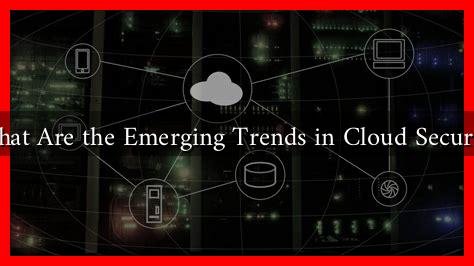-
Table of Contents
What Are the Emerging Trends in Cloud Security
As organizations increasingly migrate to cloud environments, the importance of robust cloud security measures has never been more critical. With the rise of cyber threats and data breaches, understanding the emerging trends in cloud security is essential for businesses looking to protect their sensitive information. This article explores the latest trends shaping cloud security, providing insights into how organizations can adapt to the evolving landscape.
The Shift to Zero Trust Architecture
One of the most significant trends in cloud security is the adoption of Zero Trust Architecture (ZTA). Unlike traditional security models that assume everything inside a network is trustworthy, ZTA operates on the principle of “never trust, always verify.” This approach requires continuous authentication and validation of users and devices, regardless of their location.
- Continuous Monitoring: Organizations are implementing real-time monitoring systems to detect anomalies and potential threats.
- Micro-Segmentation: By dividing networks into smaller segments, businesses can limit access to sensitive data and reduce the attack surface.
- Identity and Access Management (IAM): Enhanced IAM solutions are being deployed to ensure that only authorized users can access specific resources.
According to a report by Gartner, by 2025, 70% of organizations will adopt a Zero Trust model, up from less than 10% in 2020. This shift highlights the growing recognition of the need for more stringent security measures in cloud environments.
Increased Use of Artificial Intelligence and Machine Learning
Artificial Intelligence (AI) and Machine Learning (ML) are becoming integral components of cloud security strategies.
. These technologies enable organizations to analyze vast amounts of data quickly, identifying patterns and anomalies that may indicate a security threat.
- Automated Threat Detection: AI-driven tools can automatically detect and respond to threats in real-time, reducing the time it takes to mitigate risks.
- Predictive Analytics: ML algorithms can predict potential vulnerabilities based on historical data, allowing organizations to proactively address security gaps.
- Behavioral Analysis: AI can analyze user behavior to identify unusual activities that may signal a breach.
For instance, companies like Darktrace utilize AI to create self-learning systems that can autonomously respond to cyber threats, showcasing the potential of AI in enhancing cloud security.
Regulatory Compliance and Data Privacy
As data privacy regulations become more stringent worldwide, organizations must prioritize compliance in their cloud security strategies. Regulations such as the General Data Protection Regulation (GDPR) and the California Consumer Privacy Act (CCPA) impose strict requirements on how businesses handle personal data.
- Data Encryption: Organizations are increasingly adopting encryption technologies to protect sensitive data both at rest and in transit.
- Regular Audits: Conducting regular security audits helps ensure compliance with regulatory standards and identifies potential vulnerabilities.
- Data Residency: Companies are considering data residency requirements, ensuring that data is stored in specific geographic locations to comply with local laws.
According to a survey by McKinsey, 60% of organizations reported that compliance with data privacy regulations is a top priority for their cloud security strategy.
Cloud Security Posture Management (CSPM)
Cloud Security Posture Management (CSPM) is gaining traction as organizations seek to manage their cloud security risks effectively. CSPM tools help organizations identify and remediate misconfigurations and compliance violations in their cloud environments.
- Automated Risk Assessment: CSPM solutions provide continuous risk assessment, helping organizations identify vulnerabilities before they can be exploited.
- Policy Enforcement: These tools ensure that security policies are consistently applied across all cloud services.
- Visibility and Reporting: CSPM offers enhanced visibility into cloud environments, enabling organizations to generate reports for compliance and auditing purposes.
According to a report by Gartner, the CSPM market is expected to grow significantly, reflecting the increasing need for organizations to manage their cloud security posture effectively.
Conclusion
The landscape of cloud security is rapidly evolving, driven by emerging trends such as Zero Trust Architecture, the integration of AI and ML, regulatory compliance, and the adoption of Cloud Security Posture Management. As organizations continue to embrace cloud technologies, understanding and implementing these trends will be crucial in safeguarding sensitive data and maintaining compliance with regulatory standards.
By staying informed about these trends and adapting their security strategies accordingly, businesses can better protect themselves against the ever-growing threat of cyberattacks. The future of cloud security lies in proactive measures, continuous monitoring, and a commitment to maintaining a secure cloud environment.
For more information on cloud security trends, you can visit CSO Online.





